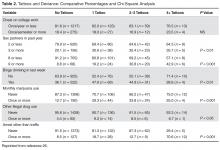Piercings
While most body piercings are not problematic, the potential for localized infections as well as associated systemic disease is present as long as the piercing site remains open [20]. Bacterial skin infections at or near the site are the most commonly reported complication of body piercings, with causative organisms primarily consisting of Staphylococcus, group A beta-hemolytic Streptococcus, and Pseudomonas [21]. Contributing to the health risks of piercing is the reluctance of patients to seek qualified medical intervention when initial site irritation, pain, or oozing occurs [21].
Systemic infections have been reported. More than 25 infective endocarditis cases in the past decade have come from tongue, navel, earlobe, lower lip, and nipple piercings [21]. Infective endocarditis should be considered in individuals with a new piercing (ie, up to 4 months), with or without a history of congenital heart disease, who present with unexplained fever, night chills, weakness, myalgia, arthralgia, lethargy, or malaise [22]. General complications include allergic contact dermatitis (eg, from nickel or latex), bleeding, scarring and keloid formation, nerve damage, and interference with medical procedures such as intubation and blood/organ donation [20].
Oral piercings may lead to difficulty speaking and eating, excessive salivation, and dental problems. Oral and nasal piercings may be aspirated or become embedded, requiring surgical removal. Tongue piercing, usually performed without anesthesia, may cause damage to teeth and gums, including dental fractures [23] and changes in chewing and speech. Because of the tongue’s vascular nature, prolonged bleeding can result if vessels are punctured during the piercing procedure. In addition, the technique for inserting tongue jewelry may abrade or fracture anterior dentition, and digital manipulation of the jewelry can significantly increase the potential for infection [24]. In fact, complications arising from oral piercing are so numerous—and in some cases life-threatening—that the American Dental Association has issued a formal statement opposing the practice [24].
Other site-specific complications have been reported ( Table 1 ). Piercing tracts in the ear, nipple, and navel are prone to tearing [20]. Galactorrhea may be caused by stimulation from a nipple piercing. Genital piercings may lead to infertility secondary to infection, and obstruction of the urethra secondary to scar formation. In men, priapism and fistula formation may occur. Navel piercings account for 40% of complications arising from body piercing and are commonly associated with infection and scarring. The peri-umbilical area is a popular site for self-piercing and a modern fashion statement, but friction from clothing in this area may account for higher infection rates, longer healing time and increased scarring [25].Behavioral Risk
While the presence of tattoos or piercings is not necessarily indicative of any aberrant patterns of behavior, clinicians should consider not only medical but also behavioral risks when tattoo or piercing is evident in patients, especially if that body modification is extreme. Koch et al [26] report stark differences in the levels of deviant behavior among college students with just 1 tattoo versus those with 4 or more ( Table 2 ), and among those with just 1 to 3 piercing versus those with 7 or more. Respondents with intimate piercings reported deviance levels similar to the heavily tattooed [26].Several studies have found that those with body modifications engaged in earlier or more frequent sexual activity and had a greater number of sexual partners [26–28]. A study by Deschesnes and colleagues [29] reported that certain “externalized” risk behaviors were more commonly associated with tattooed and pierced youth than with their unmodified counterparts, including the use of drugs, gang affiliation, school truancy, and problem gambling. Other studies of high school youth have found that tattooing was significantly and independently associated with other high-risk behaviors, including sexual intercourse, binge drinking, smoking, marijuana use, gang membership, truancy, and school failure [30]. However, a survey of college students found that, compared to individuals with no body art, individuals with 1 tattoo and less than 4 piercings had no greater likelihood to engage in high-risk behaviors [31].


